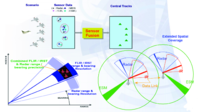
Photo from wikipedia
The data reduction capability of image compression schemes is limited by the underlying compression technique. For applications with minor changes between consecutive frames, change coding can be used to further… Click to show full abstract
The data reduction capability of image compression schemes is limited by the underlying compression technique. For applications with minor changes between consecutive frames, change coding can be used to further reduce the data. We explored the efficiency of change coding for data reduction in a wireless visual sensor network (WVSN). This paper presents an analysis of the compression efficiency of change coding for a variety of changes, such as different shapes, sizes, and locations of white objects in adjacent sets of frames. Compressing change frame provides a better performance compared with compressing the original frames for up to 95% changes in the number of objects in adjacent frames. Due to illumination noise, the size of the objects increases at its boundaries, which negatively affects the performance of change coding. We experimentally proved that the negative impact of illumination noise could be reduced by applying morphology on the change frame. Communication energy consumption of the VSN is dependent on the data that are transmitted to the server. Our results show that the communication energy consumption of the VSN can be reduced by 27%, 29%, and 46% by applying change coding in combination with JBIG2, Group4, and Gzip_pack, respectively. The findings presented in this paper will aid researchers in enhancing the compression potential of image coding schemes in the energy-constrained applications of WVSNs.
Journal Title: IEEE Access
Year Published: 2018
Link to full text (if available)
Share on Social Media: Sign Up to like & get
recommendations!